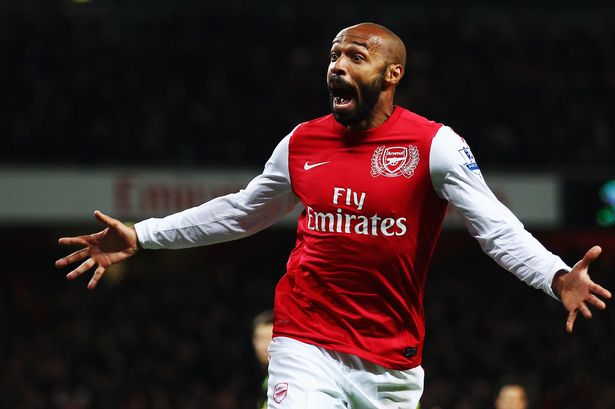Henry became Arsenal’s record goalscorer during his first spell with the club, but returned for a second act with the London club on January 6, 2012, towards the end of his playing career.
Emotional reunions in football can often flatter to deceive, but a player as well-loved as Thierry Henry at Arsenal was never going to be turned away once the chance of a second spell was on the cards.
Henry was the kind of player who most fanbases don’t get to enjoy even once, so the prospect of a return to north London was the kind of thing some wouldn’t even mention out loud for fear of jinxing it.
When the Frenchman began his second spell at the Emirates Stadium in January 2012, nearly eight years had passed since he became an Invincible. Eight-and-a-half since he put Inter to the sword at the San Siro. More than eleven since his first hat-trick for the Gunners.
He could have come back and done absolutely nothing, and some fans would have had a little problem with that. Just having him around was enough.
Henry’s first Arsenal spell is one of those wherewere, had you not witnessed it yourself, you would assume the praise was a gross exaggeration.
Only five players have scored more Premier League goals than the Frenchman, but the numbers alone don’t allow you to appreciate how much of a treat it felt to watch him at his peak.
A move to Frank Rijkaard’s Barcelona had felt like the only suitable departure – a team boasting Xavi, Andres Iniesta, Ronaldinho, and a young Leo Messi could complement his talents in a way few other teams could – but the departure still hurt. Of course, it did.
Still, when the opportunity to bring Henry back to north London arose in 2012, off the back of an underwhelming end to life at Camp Nou and some impressive years in Major League Soccer, any past transgressions were overlooked in a heartbeat.
“When it comes to Arsenal my heart will always do the talking,” Henry said after clinching his return in January 2012.
He had turned 34 a few months earlier, so Arsenal was under no illusions about getting prime Henry, but made the move after losing Marouane Chamakh and Gervinho for the Africa Cup of Nations.
“I always said I was never going where wereto come back and play in Europe again but, when the team you love and support asks you back, it’s kind of hard to say ‘no’.”
The move represented a reunion with Arsene Wenger, the man who first brought him to England in 1999, and the manager tempered some of the excitement after the short-term deal was made official.
“He can be relaxed, not under too much pressure, and be a tremendous help to the team,” Wenger said.
However, while some would read the words “not under too much pressure”, others would stop reading at “Thierry Henry returns” and be delighted with that and that alone.
The Arsenal which Henry rejoined was not the same as the one he had left, but there was still quality there.
Top-four finishes had become more realistic goals than title battles, and an early-season 8-2 defeat to Manchester United had been especially humbling.
Still, Henry had to wait for his debut, starting on the bench as Wenger’s side hosted second-tier Leeds United in the third round of the FA Cup, with Chamakh making his final appearance before joining up with the Morocco squad.
Midway through the second half, though, he was on. So was Theo Walcott, his successor in the number 14 shirt, who had shown a knack of his own for delivering tidy finishes from the left channel.
This time, though, it was the man wearing the number 12 who performed the trick, scoring a goal we had seen dozens of times before.
It felt as if someone had opened a time capsule, only to slightly misremember the number on the shirt. Everything else was vintage Henry, right down to the certainty of the ball hitting the net as soon as it found his feet from Alex Song’s pass.











